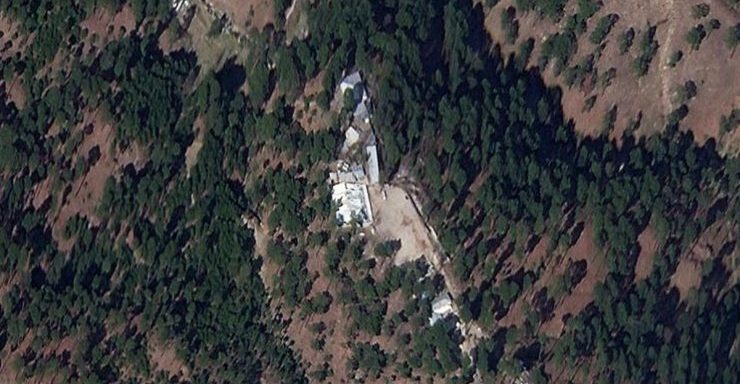
HQ-9BE: In a promotional video, the PAF announced the induction of the HQ-9BE, which is a long-range surface-to-air missile system. This system is capable of intercepting a diverse array of aerial targets.
- Fighter jets up to a distance of 260 km and a height of 27 km
- Air-launched missiles within 50 km and below 18 km altitude
- Cruise missiles over a distance of up to 25 km and above an altitude of 20 meters
- Short-range ballistic missiles within a 25 km range and below 18 km altitude
The guidance system of the HQ-9BE missile incorporates an inertial navigation system (INS) that is complemented by data link updates from a ground-based radar and employs an active radar-homing (ARH) seeker during the terminal phase of its flight.
The HQ-9BE diverges from the earlier FD-2000’s reliance on the HT-XXX series of guidance radars by incorporating the JSG-400 TDR guidance radar, which is tailored for intercepting tactical ballistic missiles, alongside the JPG-600 TDR surveillance radar. Additionally, the system is supported by a command-and-control (C2) framework and an electronic counter-countermeasures (ECCM) suite, as well as a number of decoy vehicles for enhanced protection.
Marketed as a constrained theatre air defence system, the HQ-9BE is advertised to have the capability to shoot down both combat aircraft and long-distance projectiles. The manufacturer, China Aerospace Science and Industry Corporation (CASIC), claims the system is capable of intercepting tactical ballistic missiles with a reach of up to 1,000 km. The response time of the HQ-9BE is stated to be 10 seconds for tactical ballistic missiles and 15 seconds for other types of aerial threats, making it the most sophisticated surface-to-air missile system in the PAF’s arsenal.
The PAF has emphasised its focus on capabilities to counter tactical ballistic missiles (TBMs) and cruise missiles, which, although possibly pertaining to the HQ-9BE, suggests a broader interest in developing anti-ballistic missile (ABM) defences over time. The HQ-9BE might serve as the foundational step in this direction.
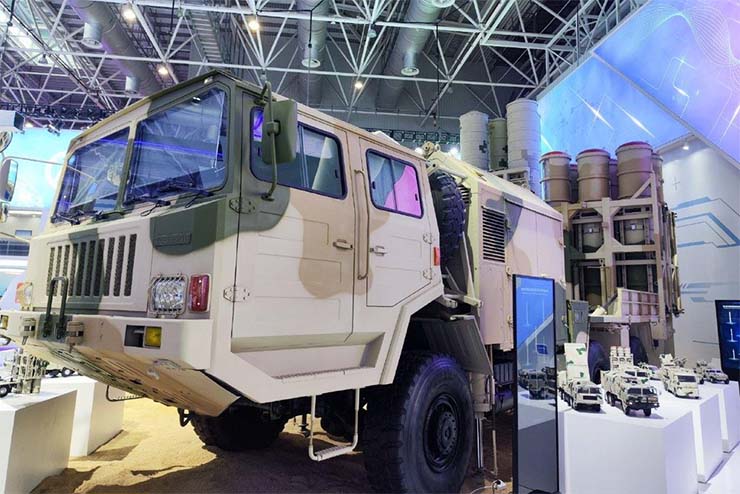
HQ-16FE: Besides the HQ-9BE, the PAF disclosed its acquisition of the Chinese HQ-16FE, also known as the LY-80B. This system represents a significant enhancement over the existing LY-80 variants used by both the Pakistan Army and Navy. The HQ-16FE appears to be the chosen system to establish the PAF’s medium-to-long-range air defence stratum.
The HQ-19FE is designed to cover distances from 25 km up to 160 km and can engage targets at altitudes ranging from 15 meters to 27 kilometres, specifically targeting aircraft of fighter jet size. Its guidance relies on an INS system enhanced by datalink, along with a seeker that operates in both semi-active and active radar-homing modes (SARH/ARH). The principal guidance radar of the HQ-16FE is a two-dimensional active electronically scanned array (AESA) capable of detecting standard fighter-sized targets—typically those with a radar cross-section (RCS) of 5 square meters—at distances up to 250 km. It has the capacity to track up to 12 targets and simultaneously engage 8 of them.
From Pakistan’s perspective, merely countering a cross-border incursion is insufficient; it must also be capable of delivering a swift, proportionate, and effective counterstrike. The view from Rawalpindi is that the prospect of a robust conventional counterassault, both by air and from the ground, could serve as a deterrent to avert an incident akin to Balakot from occurring again
Electronic Warfare: For the PAF, electronic warfare (EW) has been a critical component of its offensive capabilities; however, it is now also utilising EW to enforce area denial. The PAF showcased a minimum of three new ground-based EW systems in its promotional content, identifying them as HISAR-1, MIGAES, and EADS.
3. Improving Both Tactical and Strategic Awareness
The PAF is employing an array of radars and passive detection systems to enhance its awareness of the operational environment, which extends not only across Pakistan’s own airspace but may also, provide insight into areas beyond its national boundaries.
Multi-Layered Radar Coverage: The PAF’s surveillance capabilities are bolstered by a mix of ground radars and Airborne Early Warning and Control (AEW&C) systems. These resources work in concert to secure and scrutinise Pakistani airspace across various radar frequencies, and they also offer critical assistance for a range of missions, encompassing offensive actions.
Horizon-7: The PAF seems to have started referring to its Erieye Airborne Early Warning and Control system as ‘Horizon-7’. The PAF’s fleet includes between seven and nine Erieye units, with the most recent addition joining the force in January 2024.
Mounted on the Saab 2000 aircraft, the Erieye system features an S-band active electronically scanned array (AESA) radar capable of detecting targets up to 450 kilometres away. Additionally, it is equipped with five mission operator stations within the aircraft, which are utilised to coordinate both air and ground resources for various operational tasks, including air-to-air and air-to-surface engagements.
The Erieye system, hosted on the Saab 2000 platform, boasts an S-band AESA radar with a detection range extending to 450 km. It also includes five internal mission operator consoles, which serve to direct and integrate air and surface assets for a variety of operations, spanning from air-to-air to air-to-surface actions.
It seems that the PAF is moving towards a unified AEW&C fleet centred around the Erieye system. The most recently inducted unit, designated as 23-058, displayed some hardware variations compared to earlier Erieye units within the PAF. While it’s unlikely to be the extended-range Erieye-ER version, it could possess enhancements akin to those seen in Brazil’s modernised E-99M Erieye system. Although the PAF might consider acquiring the Erieye-ER model in the future, it would likely do so to bolster its offensive capabilities, particularly to support units equipped for extended-range operations.
YLC-8E: The PAF has also announced the integration of the YLC-8E radar, developed by the China Electronics Technology Group Corporation (CETC). While the YLC-8E is promoted as a radar capable of detecting stealth aircraft, for the PAF, it probably functions primarily as a ground-based early warning radar system.
TPS-77 MRR: The PAF has verified the incorporation of the TPS-77 Multi-Role Radar (MRR) from Lockheed Martin into its inventory. The exact quantity of units procured remains undisclosed by the PAF, but estimates by certain analysts suggest the figure could exceed 20 radars. The acquisition of the TPS-77 MRR is aimed at fulfilling the PAF’s need for a radar system to detect activity at low altitudes, acting as a gap-filler in its radar coverage.
Passive Sensors: The PAF has acknowledged the induction of at least one passive detection system into its capabilities, including the ERA VERA-E and a system of Chinese origin, which could potentially be paired with the CHL-906, as previously mentioned.
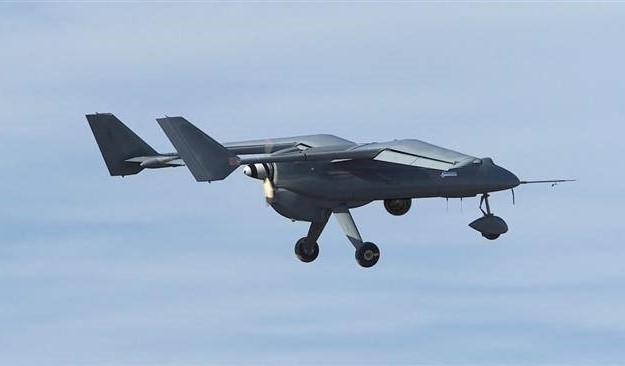
4. Integrating UAV Technology Into Offensive Operations
Unmanned aerial vehicles (UAVs) have been part of the PAF’s arsenal for some time. Specifically, the Leonardo Falco has contributed to the PAF’s intelligence, surveillance, target acquisition, and reconnaissance (ISTAR) efforts since the latter part of the 2000s. Starting in the early 2010s, the PAF expanded its UAV use to include armed drones for ground assault missions, employing the NESCOM Burraq for this purpose.
Throughout the remainder of this decade, the PAF may shift a greater number of its squadrons towards offensive capabilities to support additional operations akin to Swift Retort. The integration of the HQ-16FE and HQ-9BE systems could allow more units, which might have been previously committed to air defence roles, to undertake strike and attack responsibilities
Over the years, the PAF has consistently amplified its investment in unmanned aerial systems, notably in the medium-altitude long-endurance (MALE) and high-altitude long-endurance (HALE) categories of drones. This diversification in drone technology suggests that the PAF is strategising to deploy UAVs across a broad spectrum of mission profiles and operational roles.
MALE and HALE UAVs: The expanding collection of drones within the PAF features a variety of designs from both international and local sources, encompassing a range of sizes and weights. This includes drones like the 700 kg Bayraktar TB2 up to the larger 6,000 kg Bayraktar Akıncı.
Bayraktar Akıncı: In 2023, the PAF announced the induction of the Bayraktar Akıncı, a high-altitude long-endurance (HALE) UAV that can lift off with a maximum weight of 6,000 kg. It stands as the heaviest drone in the PAF’s operational fleet, capable of flying for 24 hours and carrying a 1,500 kg payload distributed over eight hardpoints.
Promotional materials released by the PAF have verified its plans to deploy the Akıncı for strike missions. For instance, the Akıncı has been equipped with the IREK system, enabling it to convert Mk82 and Mk83 general-purpose bombs into glide bombs, enhancing their capabilities.
The Akıncı’s design also supports the use of additional stand-off weapons (SOW), including air-launched cruise missiles (ALCMs). The PAF is exploring this capability through a joint venture with the Baykar Group. They are working together on projects like the KaGeM V3, a lighter ALCM that could potentially serve as an adjunct to the heavier Taimur/Ra’ad-series ALCMs.
Loitering Munitions: The PAF has disclosed the induction of a loitering munition known as the ‘YX,’ which is a collaborative effort between the National Aerospace Science and Technology Park (NASTP) and the Baykar Group. Although the ‘YX’ has been officially inducted, it appears to be part of an ongoing development program, with an advanced iteration termed the ‘Python’ currently in development. Notably, this munition system is designed to operate autonomously, capable of being launched on its own without the need for a separate launch vehicle.
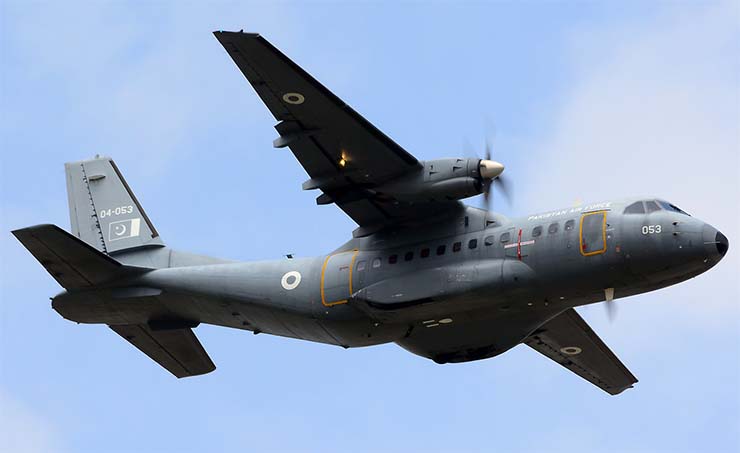
5. Enhancing Capabilities for Air Mobility and Logistical Support
While it seems the PAF is phasing out its fleet of four CN-235s, it is simultaneously enhancing its overall airlift capacity, particularly by augmenting its fleet of Hercules aircraft. In this vein, the PAF has acquired seven pre-owned C-130H planes from Belgium. As of 2023, four of these planes have been integrated into the PAF’s operational line-up, with the status of the remaining three aircraft yet to be determined.
C-130H: The former Belgian C-130H aircraft are set to become part of the PAF’s existing fleet, which includes 5 C-130B and between 9 to 11 C-130E aircraft. These C-130B and C-130E units underwent upgrades from 2014 to 2017. It will be interesting to observe whether the PAF will standardise the avionics of the incoming C-130Hs to match those of its updated C-130B/E models, which were outfitted with the Rockwell Collins Flight2 avionics system.
6. Updating the Curriculum for Advanced Air Combat Training
By the close of this decade, the PAF plans to transition its entire combat aircraft roster to 4th and 4.5-generation fighters, predominantly equipped with advanced systems such as AESA radars, helmet-mounted displays/sights, and integrated electronic countermeasures. Consequently, the PAF has been in pursuit of a specialised Lead-In Fighter Trainer (LIFT) to adequately prepare its novice aviators for these advanced technologies prior to their assignment to a frontline squadron, which may include the J-10CE, JF-17, or F-16. Looking beyond 2030, these freshly trained pilots might transition into operating stealth fighter aircraft.
In 2015, the PAF expressed its preference for employing the JF-17B as a lead-in fighter trainer (LIFT), clearly indicating its lack of interest in opting for a smaller aircraft for this training role. The PAF’s principal apprehension was that operating costs for a dedicated LIFT such as the L-15 could be as substantial as those for the JF-17, negating any potential cost benefits of a smaller trainer.
The PAF’s advancement initiatives for the current decade encompass a wide array of areas, including the enhancement of fighter jets, unmanned aerial vehicles, surface-to-air missile systems, ground-based electronic warfare and signals intelligence, ground-based electronic attack and countermeasures, both airborne and terrestrial radar systems, the extension of airlift capabilities, and the introduction of a new stand-off jammer
Yet, in 2017, the PAF shifted its stance from the JF-17B to considering specialised LIFT models, specifically the AVIC L-15B and the Leonardo M-346. Reports from 2023 indicate that the PAF had entered into discussions regarding the acquisition of the L-15B.
L-15B: In outlining the necessities for its LIFT program, the PAF emphasised the importance of three primary features: an afterburner-equipped engine, a multi-role radar system, and a tactical data link (TDL).
7. Forming Specialised Units Dedicated to Offensive Missions
The incident at Balakot underscored the necessity for enhanced quick reaction and area-denial capabilities. As a result, the PAF secured the HQ-16FE medium-to-long-range surface-to-air missile (SAM) and the HQ-9BE long-range SAM systems. These acquisitions are intended to complement the PAF’s increasing contingent of fighter jets equipped with AESA radar and long-range air-to-air missiles (LRAAMs).
Nonetheless, developing a capability for retaliation is deemed equally vital for deterrence. From Pakistan’s perspective, merely countering a cross-border incursion is insufficient; it must also be capable of delivering a swift, proportionate, and effective counterstrike. The view from Rawalpindi is that the prospect of a robust conventional counterassault, both by air and from the ground, could serve as a deterrent to avert an incident akin to Balakot from occurring again.
In pursuit of this objective, it’s probable that the PAF determined it needs to develop the capability to carry out several operations on the scale of Swift Retort, whether in rapid sequence or concurrently.
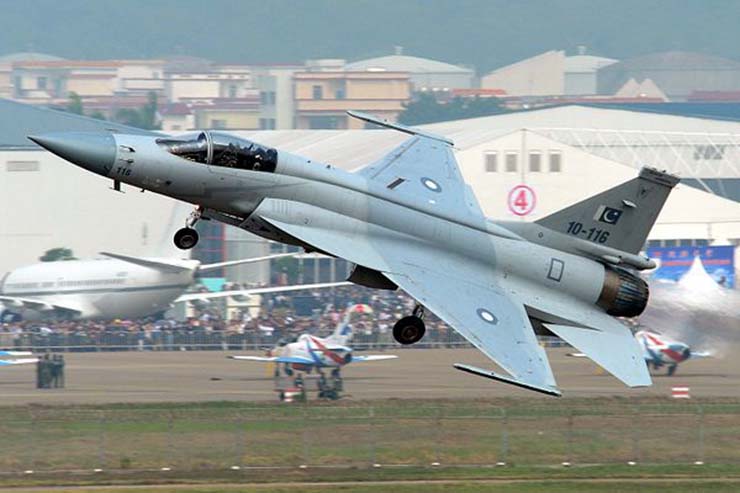
Operation Swift Retort was conducted using a mixed force that included multirole combat aircraft, airborne early warning and control (AEW&C) systems, and electronic attack/electronic countermeasure (EA/ECM) platforms. Throughout the remainder of this decade, the PAF may shift a greater number of its squadrons towards offensive capabilities to support additional operations akin to Swift Retort. The integration of the HQ-16FE and HQ-9BE systems could allow more units, which might have been previously committed to air defence roles, to undertake strike and attack responsibilities. The JF-17C and J-10CE squadrons are likely to be at the forefront of these units; the Bayraktar Akıncı could also play a role as a stand-off weapon (SOW) platform, deploying air-launched cruise missiles and glide bombs from within Pakistani airspace, in a manner similar to the role played by the Mirage aircraft.
In the immediate future, the force structure might see the J-10CE assuming the role of providing air superiority cover, while the JF-17B, the JF-17C/Block-III, and the Akıncı could be designated for precision strike missions. It is also conceivable that the JF-17 Block-II could undergo enhancements to incorporate an AESA radar, a modernised avionics system, a helmet-mounted display/sight, and an advanced electronic countermeasures system. However, the upgraded Block-II variants may primarily serve in a defensive capacity for airspace control, complementing the capabilities of the F-16s and the earlier JF-17 Block-I models.
Yet, such a force structure is anticipated to be effective primarily within the current decade. India is concurrently developing a formidable area-denial network with a host of sophisticated surface-to-air missiles such as the Barak-8, in addition to procuring advanced 4.5-generation fighters like the Rafale and the Tejas Mk1A. In light of an expectedly more challenging threat landscape posed by India in the years ahead, the PAF is now turning its focus to next-generation fighter aircraft (NGFA) for its future needs. Central to this strategic shift is the consideration of the Shenyang J-31.
Shenyang J-31: The J-31, a twin-engine stealth next-generation fighter aircraft (NGFA), is set to be the mainstay of the PAF’s future offensive air capabilities. The PAF has formally expressed its intention to procure the J-31.
Given its declared interest in manned-unmanned teaming (MUM-T), the PAF is expected to acquire UCAVs that possess strike abilities (analogous to the Bayraktar Kızılelma or TAI ANKA-3) and a disposable decoy UAV, potentially derived from a target drone design. However, there could be a niche for another class of UAV, one that bridges the gap between a lightweight sub-1-ton decoy and a heavier 9-10-ton UCAV
The PAF is seemingly intent on creating a balanced composition of aircraft that excel in range, payload capacity, and low observability (LO), which encompasses stealth capabilities against radar and infrared detection, all within a versatile multirole platform. Such a fighter jet could be pivotal in executing the PAF’s offensive wings’ long-distance air-to-air and air-to-ground operations.
Manned-Unmanned Teaming: The PAF’s engagement with unmanned combat aerial vehicles (UCAVs) is evidenced by its mention of manned-unmanned teaming (MUM-T). While the PAF has not disclosed specifics on developing MUM-T capabilities, it is plausible to assume that it will follow the broader trajectory established by the industry in this area.
New Airborne Standoff Jammer(s): The PAF has subtly indicated plans to enhance its EA/ECM capabilities by incorporating at least one new airborne stand-off jammer (ASOJ), utilising the Bombardier Global Express 6000 as the base platform. It remains uncertain whether the PAF will opt for the Aselsan HAVASOJ system or pursue the development of an indigenous solution. The quantity of ASOJ assets procured is expected to align with the establishment of dedicated offensive wings within the PAF during the 2020s.
8. Possible Objectives
To date, the PAF’s advancement initiatives for the current decade encompass a wide array of areas, including the enhancement of fighter jets, unmanned aerial vehicles, surface-to-air missile systems, ground-based electronic warfare and signals intelligence, ground-based electronic attack and countermeasures, both airborne and terrestrial radar systems, the extension of airlift capabilities, and the introduction of a new stand-off jammer.
Nevertheless, there are certain areas where the PAF might start to direct its attention, potentially towards the end of this decade, with efforts extending into the 2030s.
Attritable Loyal Wingman UCAV: Given its declared interest in manned-unmanned teaming (MUM-T), the PAF is expected to acquire UCAVs that possess strike abilities (analogous to the Bayraktar Kızılelma or TAI ANKA-3) and a disposable decoy UAV, potentially derived from a target drone design.
However, there could be a niche for another class of UAV, one that bridges the gap between a lightweight sub-1-ton decoy and a heavier 9-10-ton UCAV. This middle-weight category might include a 2-4-ton “loyal wingman” UCAV, equipped to carry both air-to-air missiles and compact air-to-ground weapons. This type of UAV would be designed to support next-generation fighter aircraft, taking on the role of a primary decoy and strike asset, especially in high-threat scenarios where it could help absorb potential losses.
-The writer is Aerospace & Defence Analyst. The views expressed are personal and do not necessarily carry the views of Raksha Anirveda















